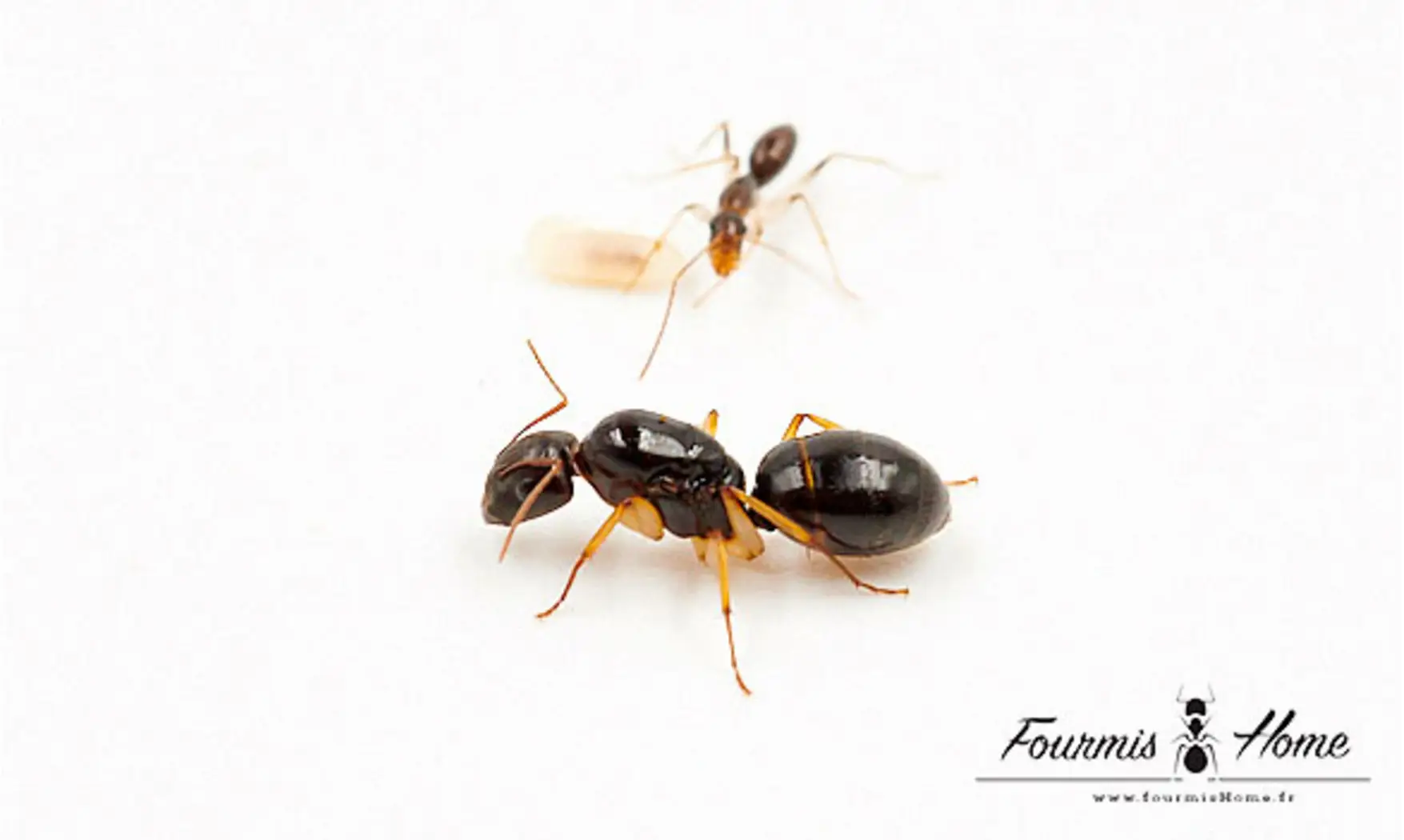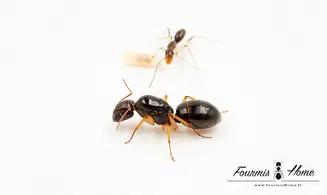

Camponotus lownei
Reference : CFOUR-044
99.90€
Unavailable
0 in stock
Latin name: Camponotus lownei
Taxonomy: Subfamily: Formicinae, Tribe: Camponotini
Breeding level: Beginner, just provide a good temperature
Geographic distribution: Australia
Habitat: Dry forest
Colony form: Monogyne
Queen: Size: 10 - 11mm Color: Head, thorax and gastre black brown, legs and antennae yellow.
Workers: Size: 4 - 6mm Color: Head, thorax and gastre black brown, legs and antennae yellow.
Major: Size 9 - 11mm Color: Head, thorax and gastre black brown, legs and antennae yellow.
Male: Size: 8mm Color:
Food: Honeydew and insects: such as flies, mealworms, mosquitoes and small locusts; also fruit
Humidity: Hunting area: 30 - 50% Nest: 50 - 60%
Temperature: Hunting area: 20-32 ° C Nest: 24-28 ° C
Hibernation: No, but a winter break from November to March at room temperature is recommended
Type of nest: Plexiglas nest, nest with tubes, reconstituted stone nest.
Description: Camponotus lownei is one of the most widespread Camponotus species in Australia, found in almost any open space. These ants form large underground colonies in nature and are active at dusk and at night.
Development: Swarming
Foundation: Take place in a cloistered manner (without food) Development: 45 days from egg to worker (depending on temperature)
Size of the colony: 20,000 individuals, the queen can reach the age of 20 years.
Taxonomy: Subfamily: Formicinae, Tribe: Camponotini
Breeding level: Beginner, just provide a good temperature
Geographic distribution: Australia
Habitat: Dry forest
Colony form: Monogyne
Queen: Size: 10 - 11mm Color: Head, thorax and gastre black brown, legs and antennae yellow.
Workers: Size: 4 - 6mm Color: Head, thorax and gastre black brown, legs and antennae yellow.
Major: Size 9 - 11mm Color: Head, thorax and gastre black brown, legs and antennae yellow.
Male: Size: 8mm Color:
Food: Honeydew and insects: such as flies, mealworms, mosquitoes and small locusts; also fruit
Humidity: Hunting area: 30 - 50% Nest: 50 - 60%
Temperature: Hunting area: 20-32 ° C Nest: 24-28 ° C
Hibernation: No, but a winter break from November to March at room temperature is recommended
Type of nest: Plexiglas nest, nest with tubes, reconstituted stone nest.
Description: Camponotus lownei is one of the most widespread Camponotus species in Australia, found in almost any open space. These ants form large underground colonies in nature and are active at dusk and at night.
Development: Swarming
Foundation: Take place in a cloistered manner (without food) Development: 45 days from egg to worker (depending on temperature)
Size of the colony: 20,000 individuals, the queen can reach the age of 20 years.

